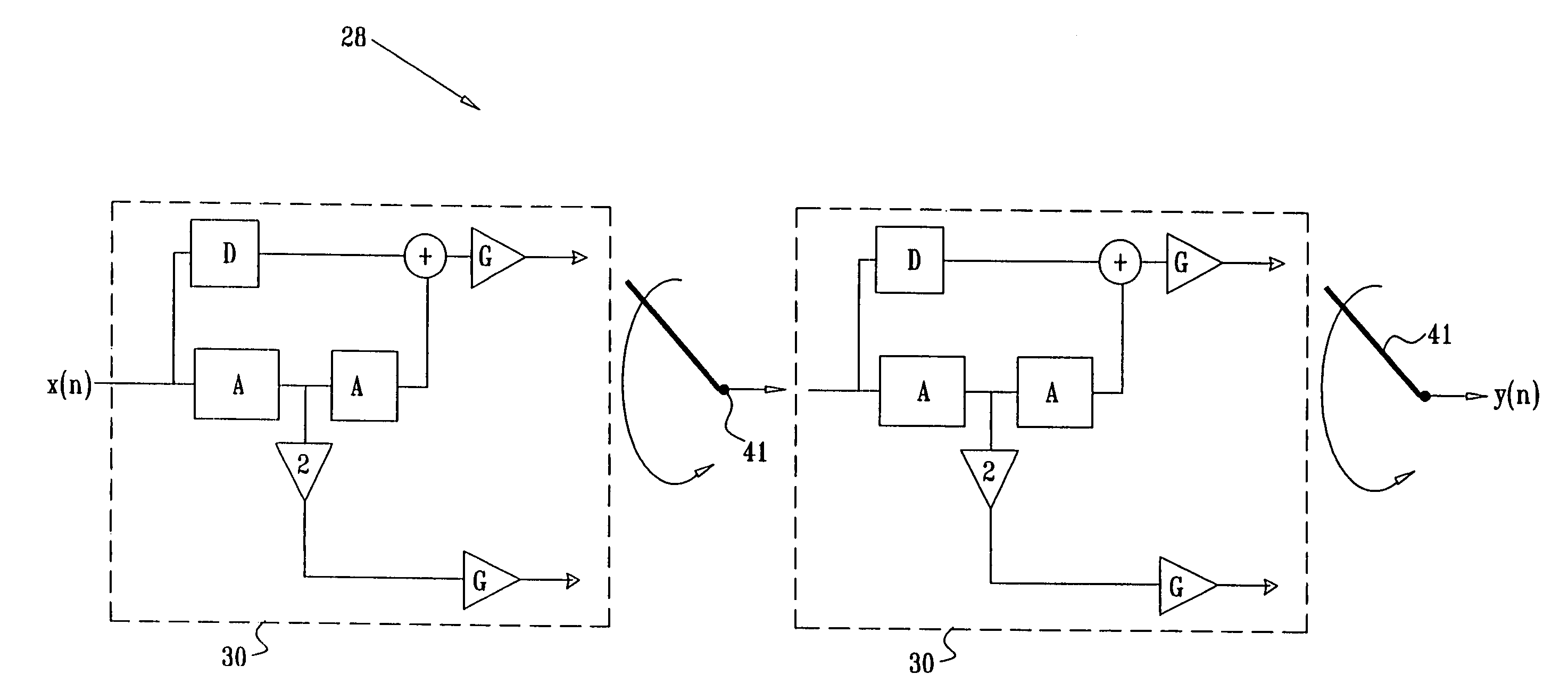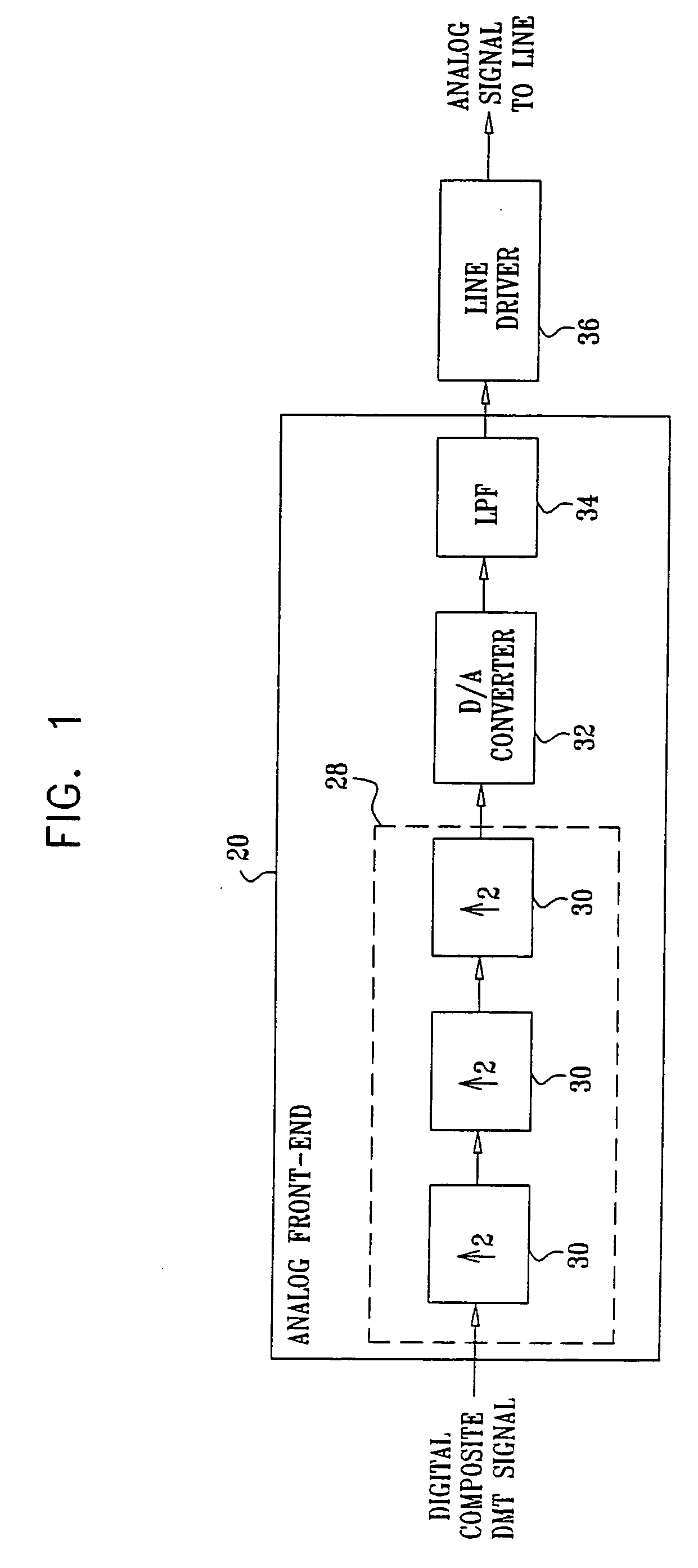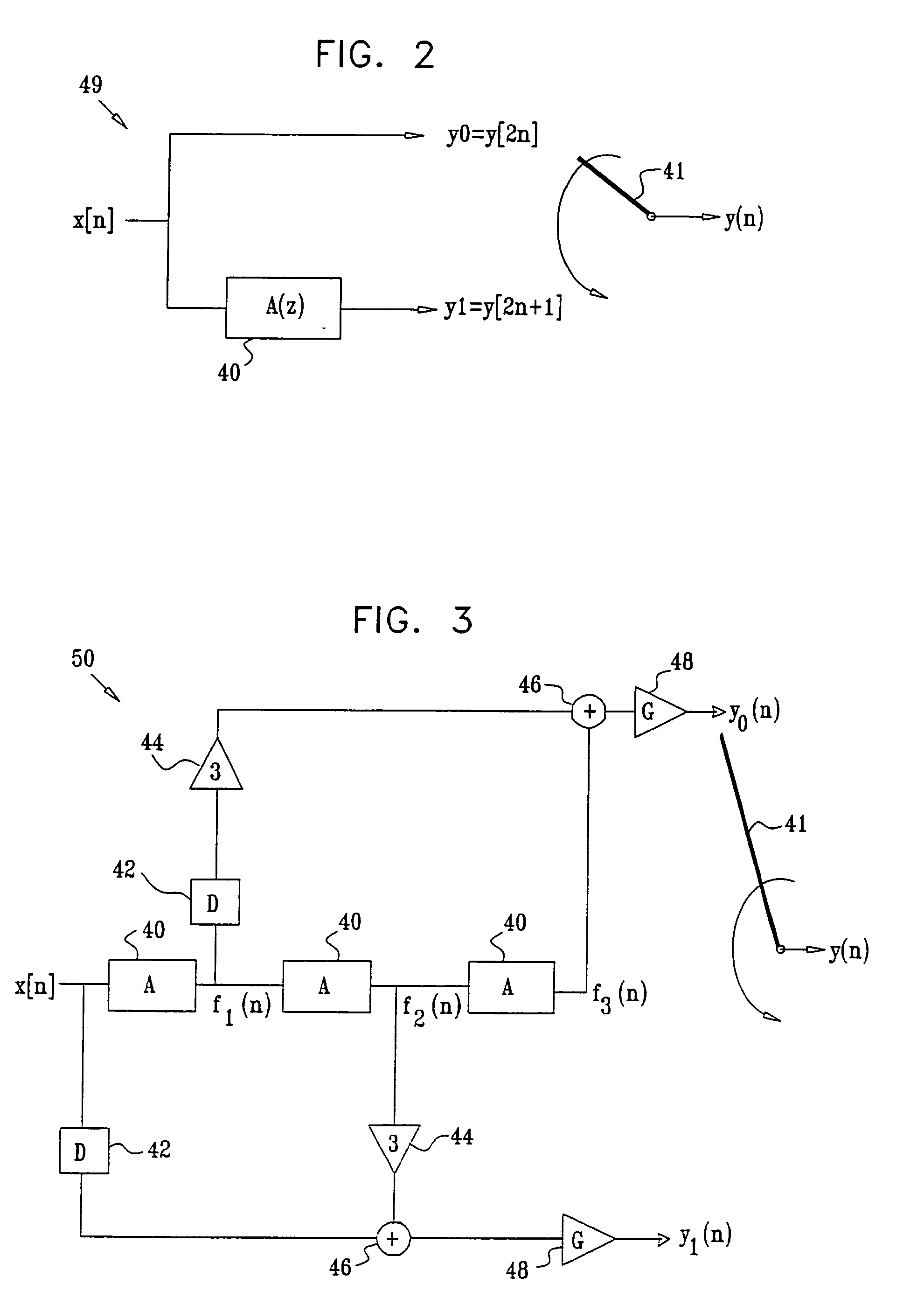Interpolation and decimation using newton polyphase filters
a polyphase filter and interpolation technology, applied in the field of digital signal processing, can solve the problems of degrading the stop-band attenuation of the filter, high filter side, etc., and achieve the effect of reducing computational complexity, further simplifying the filter structure, and reducing the associated computational complexity
- Summary
- Abstract
- Description
- Claims
- Application Information
AI Technical Summary
Benefits of technology
Problems solved by technology
Method used
Image
Examples
Embodiment Construction
[0066]FIG. 1 is a block diagram that schematically illustrates parts of an ADSL transmitter, in accordance with an embodiment of the present invention. In this embodiment, polyphase interpolation filters are used for multiplying the sampling rate of a digital Discrete Multi-Tone (DMT) signal that comprises multiple modulated tones, according to the ADSL specification. (Additional details regarding the different DSL standards can be found at www.dslforum.org.)
[0067] The ADSL transmitter shown in FIG. 1 comprises an analog front-end (AFE) 20 that receives a digital composite DMT signal and converts it to an analog signal suitable for transmission over a telephone line. The AFE is typically implemented in a mixed-signal Application-Specific Integrated Circuit (ASIC). The AFE comprises a multistage interpolation filter 28 comprising three interpolation filters 30. The interpolation filters are implemented using methods described herein. Multistage interpolation filters are further expl...
PUM
 Login to View More
Login to View More Abstract
Description
Claims
Application Information
 Login to View More
Login to View More - R&D
- Intellectual Property
- Life Sciences
- Materials
- Tech Scout
- Unparalleled Data Quality
- Higher Quality Content
- 60% Fewer Hallucinations
Browse by: Latest US Patents, China's latest patents, Technical Efficacy Thesaurus, Application Domain, Technology Topic, Popular Technical Reports.
© 2025 PatSnap. All rights reserved.Legal|Privacy policy|Modern Slavery Act Transparency Statement|Sitemap|About US| Contact US: help@patsnap.com



